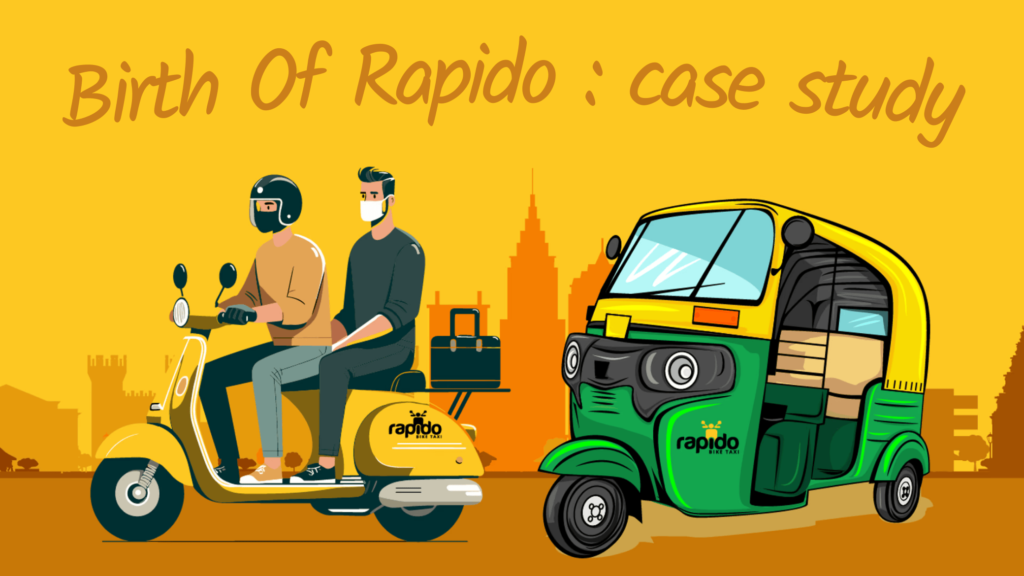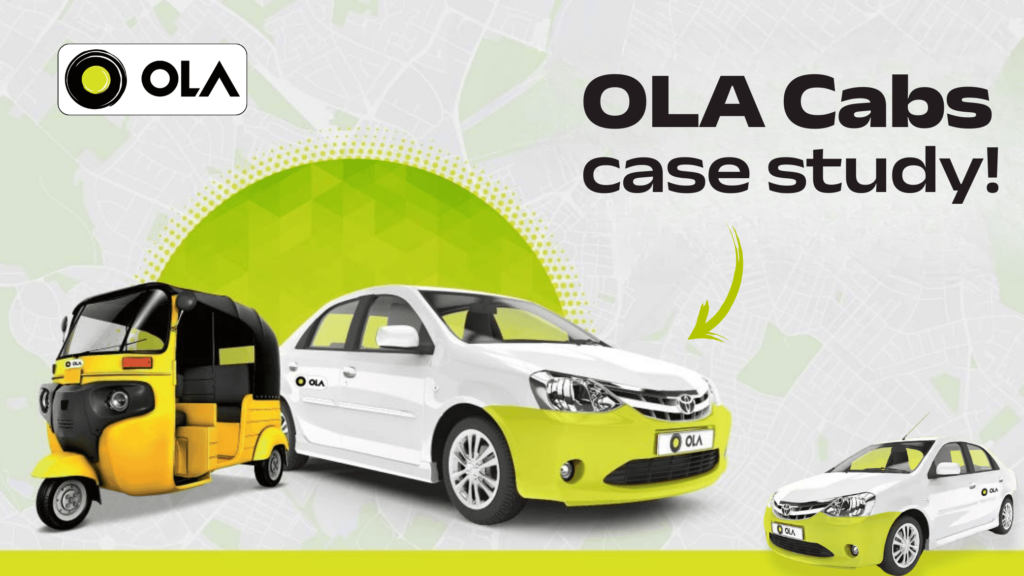Arvind Nair, Pavan Goyal, and Shyam Sunder founded Rapido. The idea behind Rapido was born out of a simple observation. The majority of daily commuters in Indian cities were either facing delays due to traffic or struggling with the lack of reliable and affordable transportation options. The founders identified the need for a quicker alternative to traditional taxi services and public transport.
In a market where large scale ride hailing services like Ola and Uber were already well established. Rapido entered with a unique proposition, providing bike rides as an alternative to cars. Motorcycles offered the advantage of navigating through the dense city traffic, providing faster travel. Particularly during rush hours when roads are clogged with vehicles. The founders also realized that two wheelers were more cost effective than cars, both for riders and drivers, making this an attractive proposition for the growing number of urban commuters in India.
How Rapido Works: An Efficient Ride Hailing Platform
Rapido operation model is simple and easy to use, making it an attractive option for commuters. Users download the Rapido app, available on both Android and iOS and book a ride by entering their pickup and drop off locations. Once the request is made, nearby drivers receive the ride request, and the closest one is matched with the passenger. The app provides real time updates on the driver’s location and estimated time of arrival.
Expanding the Service: From Bike Taxis to More Options
While the company began solely as a bike taxi service, it has expanded its offerings over the years. The company now provides several options to cater to the diverse needs of commuters.
- Rapido Auto: A service that offers auto-rickshaw rides through the app. This extension was introduced to provide users with another two wheeler option for commuting in cities, where autos are a popular form of transport.
- Rapido Carpool: Recognizing the growing need for cost-sharing and eco-friendly travel, Rapido also introduced carpooling services. Passengers traveling along the same route can share the ride, reducing the overall cost and also contributing to reduced traffic congestion.
These new additions reflect Rapido commitment to expanding its footprint and catering to a broader customer base. The company aims to provide seamless, convenient, and affordable transport solutions across various segments of urban mobility.
Technology at the Core of Rapido Growth
Technology plays a crucial role in the functioning and success of Rapido. The app itself is designed to be user-friendly, allowing users to quickly book rides with a few taps. The backend of the app utilizes GPS technology to locate the nearest available drivers and optimize routes for efficiency.
Rapido also incorporates data analytic to monitor driver performance, route efficiency, and customer satisfaction. This data driven approach allows the company to continuously refine its services. For example, using algo to calculate demand patterns, Rapido can predict areas with high ride requests and ensure an adequate number of drivers in those locations. This helps in reducing waiting times for passengers and maximizing earnings for drivers.
Effect on the Transportation Ecosystem
Rapido success in India can be attributed to its ability to address multiple pain points in urban transportation. By offering affordable and fast transportation, Rapido has made significant contributions to improving the daily commute for millions of Indians.
- Affordable Mobility: Traditional taxis and ride-hailing services often come with high fares, especially during peak hours. Rapido bike taxis offer a much cheaper alternative, making it accessible to a larger segment of the population. Including students and working professionals who may not have access to private vehicles.
- Reducing Traffic Congestion: One of the most significant advantages of Rapido bike-taxi service is its ability to navigate through heavy traffic. In crowded cities, motorcycles can weave through traffic lanes more easily than cars, thus reducing commute times and contributing to the overall easing of congestion.
- Job Creation for Drivers: Rapido provides a platform for individuals who own motorcycles to become drivers, offering them an opportunity to earn income by utilizing their existing assets. This has proven to be a lucrative opportunity for many, especially in smaller towns where unemployment rates may be higher. The company’s incentive structures and flexible working hours also contribute to attracting a large number of drivers.
Challenges Faced by Rapido
Despite its success, Rapido faces several challenges as it continues to develop in a highly competitive market. The ride hailing industry in India is crowded with large players such as Ola and Uber, both of which have significant financial resources and market share.
- Regulatory Challenges: As with other ride-hailing services, company has had to navigate regulatory challenges in various cities. Local governments often impose restrictions on bike taxi services due to safety concerns or conflicts with existing public transportation systems. Rapido must continuously work with policymakers to ensure compliance with local laws while providing a high quality service.
- Driver Safety and Welfare: Although Rapido has introduced safety features, the safety of riders and drivers is a persistent concern in the bike taxi business. The company must continue to invest in ensuring that its drivers are well -trained, their vehicles are maintained properly, and they follow all safety protocols.
- Competition: While Rapido unique bike taxi model has given it an edge, the company still faces intense competition. From larger players like Ola and Uber, which also offer similar services in some cities. These companies have the financial resources to engage in aggressive marketing campaigns and pricing strategies, which could make it difficult for Rapido to maintain its competitive advantage.
Looking Ahead: Future of Rapido
Rapido future looks promising as it continues to innovate and expand its services. The company is focused on building a sustainable business model by diversifying its offerings and addressing the challenges in the transportation sector.
- Electric Vehicles (EVs): The company is looking into incorporating electric vehicles into its fleet, contributing to India push for sustainable transportation and reducing pollution in cities. The adoption of EVs could also help reduce operational costs in the long run.
- Expansion to New Cities: Rapido continues to expand its operations to new cities and towns, further solidifying its presence across India. By catering to smaller cities and towns, where bike taxi services are not as widely available, Rapido can tap into a large untapped market.
- Partnerships and Collaborations: To compete with larger players, Rapido may consider forming strategic partnerships or collaborations with other companies in the mobility or tech space. This would help the company scale faster and offer more diversified services to its customers.
Rapido Role in Shaping Urban Mobility
Rapido has successfully carved out its niche in India crowded transportation market by providing an affordable, fast, and reliable alternative to traditional taxis and public transport. Its growth, driven by technology, creation, and customer centric services, demonstrates how app based services can improve urban mobility. As the company continues to innovate and adapt to the changing needs of commuters. Rapido is set to play an even more significant role in shaping the future of urban transportation in India.
















